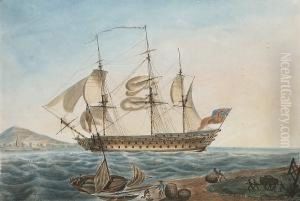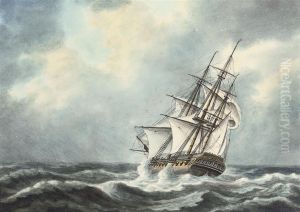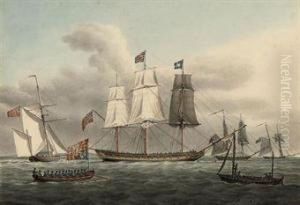William Innes Pocock Paintings
William Innes Pocock was a British artist, known primarily for his marine paintings and watercolors. He was born in 1869 into a family with naval connections, which likely influenced his choice of subject matter throughout his artistic career. Pocock's work often depicted ships and the sea, capturing the dynamic energy and movement of maritime life.
He grew up during a time when Britain's naval power was a source of national pride, and his paintings reflect the romanticism and fascination with the sea that was prevalent in Victorian and Edwardian England. Pocock was not only a painter but also an illustrator, contributing to books and periodicals of the time. His illustrations would often accompany stories and articles with nautical themes, further cementing his reputation as a marine artist.
Despite the specificity of his subject matter, Pocock's style varied throughout his career. He could deftly switch from detailed and realistic portrayals of ships and seascapes to more impressionistic treatments of light and water. His work often showed a keen understanding of the technical aspects of ships, a testament to his deep engagement with the subject matter.
Pocock's contributions to marine art were recognized in his time, and he participated in exhibitions, though he was not as widely known as some of his contemporaries. He was part of a tradition of British maritime painters, a genre that included artists such as J.M.W. Turner and Charles Pears.
William Innes Pocock continued to paint until his later years, leaving behind a body of work that provides a window into the maritime history and aesthetics of his era. He passed away in 1951, but his paintings remain, offering glimpses of the majesty of sail and the allure of the sea that captured his imagination for a lifetime.




